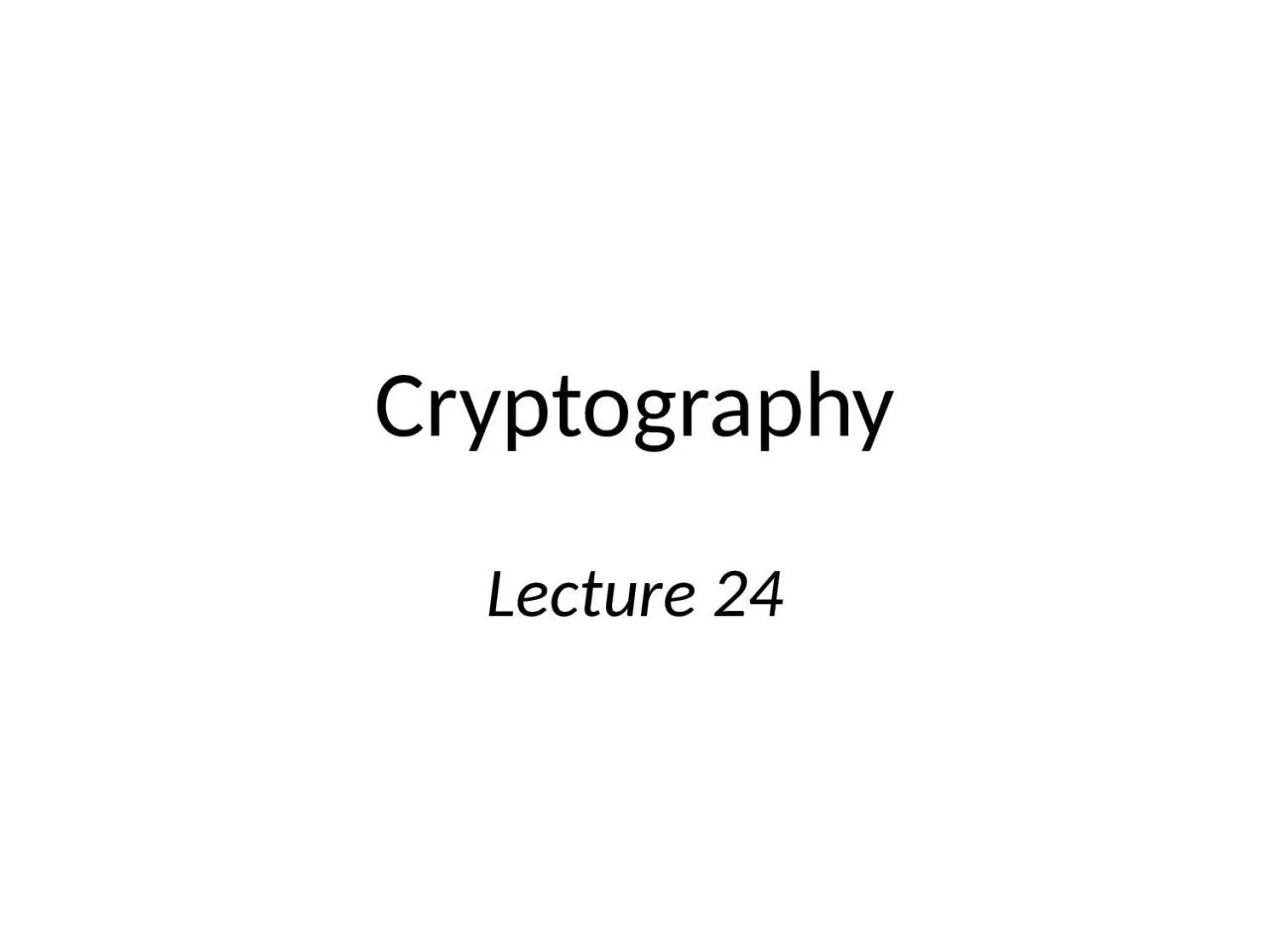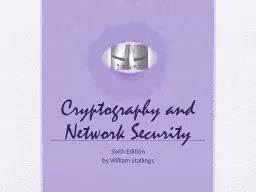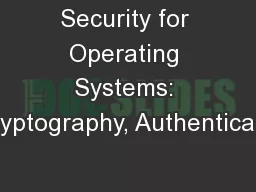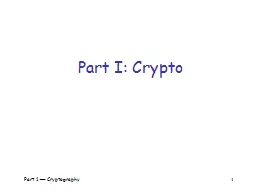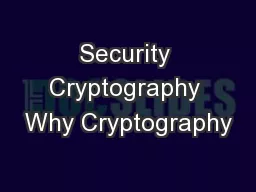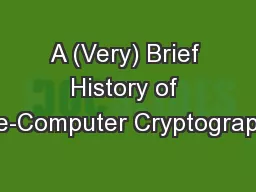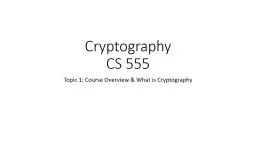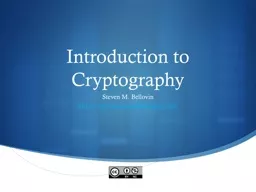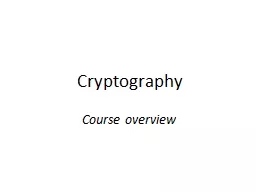PPT-Cryptography Lecture 24 Special topics?
Author : violet | Published Date : 2022-06-28
It looks like we will have 12 lectures devoted to special topics Will not be on final exam Schedule on webpage has some candidate topics Feel free to email me suggestions
Presentation Embed Code
Download Presentation
Download Presentation The PPT/PDF document "Cryptography Lecture 24 Special topics?" is the property of its rightful owner. Permission is granted to download and print the materials on this website for personal, non-commercial use only, and to display it on your personal computer provided you do not modify the materials and that you retain all copyright notices contained in the materials. By downloading content from our website, you accept the terms of this agreement.
Cryptography Lecture 24 Special topics?: Transcript
Download Rules Of Document
"Cryptography Lecture 24 Special topics?"The content belongs to its owner. You may download and print it for personal use, without modification, and keep all copyright notices. By downloading, you agree to these terms.
Related Documents

